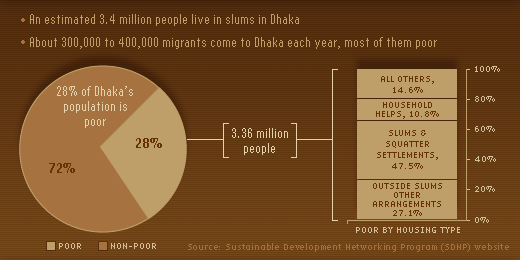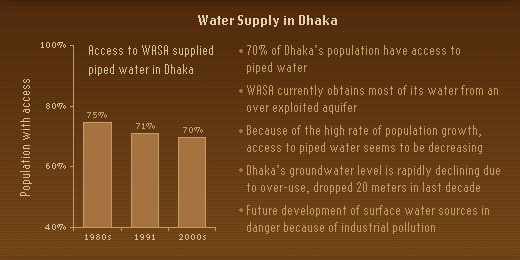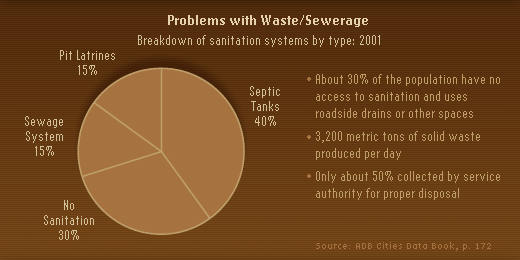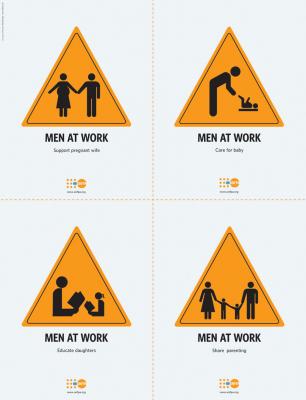For the first time ever, more than half of the world’s population now lives in cities. July 11 marks World Population Day and the focus is on South Asia, where the biggest cities in the world are growing quickly. Dhaka, Bangladesh, could be home to 20 million people in 10 years, according to the World Bank. This years theme is “men at work”, in which men are encouraged to help their wives and daughters gain a better life.
The global population has tripled in the last century. In 1988, the earth’s population was five-billion, in 2000 it was 6.06 billion and since then, it has been increasing steadily at the rate of 78 million per year. It is predicted that 7.3 billion to 10.7 billion people will be crammed onto the planet by the year 2050. It is estimated that 90% of this growth will be in developing nations. Nations that already have a hard time feeding and providing services to their populations. By 2030, towns and cities will be home to five billion people. The urban population of Asia and Africa will double in a generation.
So what does all this mean? It means we need to start thinking hard about what these people are going to eat, how we are going to house them, and how they are going to get energy. Most nations experience a decline in population growth as they develop. With greater education and access to family planning the average house hold size decreases. Even with these decreases that is a lot of people to feed shelter and energize.
They will need a place to live. The obvious question is will it be a sustainable construction, or will they clear cut the rain forest to provide the lumber. They will need something to eat. The question then becomes, will it be a sustainable agriculture, or will they ruin the soil. They will need energy. Do they use coal and further the destructive nature of global warming? Or will they instead embrace renewable energy.
Here is a window into the kind of problem we are going to have to solve. Dhaka.

Almost half a million people move to this city EVERY YEAR! Most of them poor, most of them living in slums.

They are rapidly running out of critical resources like fresh water.

The sheer mass of people are making it hard to keep up with basic sanitary needs.
So we are doomed right? Wrong. While this might look to some people like the coming apocalypse it could in fact be the best chance the world has ever seen for a radical revolution in the way people live. Bill Mckibben talks about growth, and happiness in his latest book Deep Economy. His idea is that growth after a certain point will not make you happy. However if you have nothing growth is good. But not just any growth, locally orientated sustainable growth. India could be the hub of an Asian driven move towards low energy sustainable green homes (for more on green homes read about Edward Mazria and his green building revolution). They could leapfrog straight to the good bits and skip the learning curve.
Clearly India and China will not be able to continue to power their countries on coal and oil (neither will the USA for that matter). The amount of energy they will need, if provided by dirty fossil fuels, would be utterly catastrophic to the worlds climate. They need what most of the world needs, more clean renewable energy. Luckily India is already paving the way with innovative uses of renewable energy to improve the lives of its residents.
You might be thinking that this problem has nothing to do with you. You might be sitting some place in America, Europe, Japan thinking “I don’t live there”. If even the modest predictions for global warming start to play out, we could have millions of people from south east Asia, Micronesia, and other low lying areas moving north into China (which would have its own problems). Competition for resources would be fierce and fighting is likely to break out. Do not forget that both India and Pakistan have nuclear weapons. A nuclear war between the two would almost certainly effect everyone in the world.
Even if the dark specter of nuclear war can be avoided the magnitude of the refugee problem would tax the worlds economy. Think about how many things are made in China, or India, or Vietnam, or Korea. In a global economy, disasters in Asia effect everyone (also don’t forget that the Western World would be dealing with many of the same problems, taxing our economy as well). It is therefore imperative that western nations deal with the growing population of the developing world by aiding these countries in creating an economy based on sustainable design, renewable energy, organic farming, and good stewardship of the natural resources they possess. We will not only be helping them live a better life, but in the end spare ourselves from harm as well. Global warming lifts all ships.
By creating a vibrant renewable energy based economy here in the United States and then selling our technology to the world (at a modest profit) we could enrich our own citizens while providing the tools to create these new vibrant economy’s in the developing world. We would be building better trading partners, and also building stable democracy’s that would help reduce the instances of terrorism. Drop solar panels not bombs.
What do you think? Can the world handle this many more people? What should the western world do? What is your opinion? Leave a comment below and let us know.
